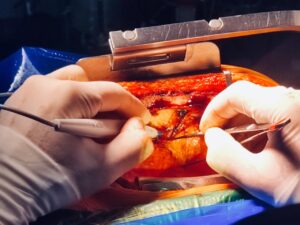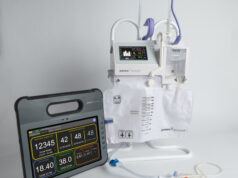 For the estimated one in 10 left handers in the general population many day-to-day activities require subtle adjustments that often go unnoticed to the overwhelming majority who are naturally right-handed.
For the estimated one in 10 left handers in the general population many day-to-day activities require subtle adjustments that often go unnoticed to the overwhelming majority who are naturally right-handed.
“As a left-handed person, I have seen a lot of challenges since I was a kid,” Eric E Vinck, a cardiac surgeon at Colsubsidio and Country Clinic (Bogota, Colombia) and PhD student at Maastricht University (Maastricht, The Netherlands) tells Cardiovascular News.
Vinck says that simple tasks such as writing in a notebook or playing a musical instrument are made more difficult by the fact that left-handers must often use equipment designed for right-handed use. In cardiac surgery, as well as many other medical disciplines, these challenges can be even more pronounced with most surgical equipment and techniques optimised for right handers.
“During my general surgery residency, I adapted to using my right hand, but I didn’t like it very much and it just did not feel right because in your brain you know your left hand is your dominant hand,” he explains, relaying his experience of having to make this adjustment during his training. “When I got into cardiac surgery, which requires a lot of finer movements with higher precision, I said ‘no, I can’t keep on using my right hand, I have to start using my left hand’.”
After facing what he describes as lack of resources and support for left-handed cardiac surgery residents, Vinck has embarked on a research project intended to shed light on the training and educational needs of left-handed trainees, and to fill the current void for learning materials dedicated to this group.
To begin the project, Vinck and colleagues have surveyed left-handed cardiac surgeons and residents to understand the extent to which they are required to adapt in their daily practice, access to left-handed surgical equipment, and to gauge desire for dedicated courses in minimally invasive cardiac surgery for left handers.
Preliminary results of the survey of 74 individuals, shared with Cardiovascular News, indicate that close to 95% lack access to left-handed surgical instruments, whilst 78% had no mentorship or guidance from a left-handed cardiac surgeon during training. Almost one in five, 18%, said that they predominantly use their right hand due to pressure from faculty.
“If you look at the cardiac anatomy, the valves face upwards to the right. For a surgeon it is actually easier if you are left handed because of the ergonomics and the geometry of your hand, it is easier for your left hand to face all of the valves in order to put sutures,” says Vinck, pointing out that there is a potential advantage to being a left hander in the operating room that may not be fully realised due to current practices.
The next stage of the project will see dedicated training and simulation activities taking place at the upcoming annual meeting of the European Association of Cardio-Thoracic Surgeons (EACTS; 9–12 October, Lisbon, Portugal), with a learning lab led by Roman Gottardi (Mediclin Heart Institute Lahr/Baden, Lahr, Germany) offering attendees the fundamental techniques of coronary artery bypass grafting and aortic valve replacement, direction in the use of instruments, and improving stitching techniques, as well as basic skills like sternotomy and cannulation, all geared to a left hander’s point of view. Peyman Sardari Nia (Maastricht University Medical Centre, Maastricht, The Netherlands) also leads a session in the endoscopic dry lab.
“Surgery will always be very individual and have a lot of variability, you will never expect the same technique to be applied the same way, but with the simulation training and the skills lab for residents at EACTS we are going to gather ideas and technical information together to help develop some kind of guide for left-handed cardiac surgeons to start following that will perhaps make it easier for them going through the training process,” Vinck says how these sessions will offer practical learning, also feed into future outputs for his research.
“We are going to evaluate left-handed simulation training, look at variations in movements, depths of sutures, weaknesses and strengths of left handers. We are going to prove that being left handed is not a disadvantage, it is actually beneficial.”













